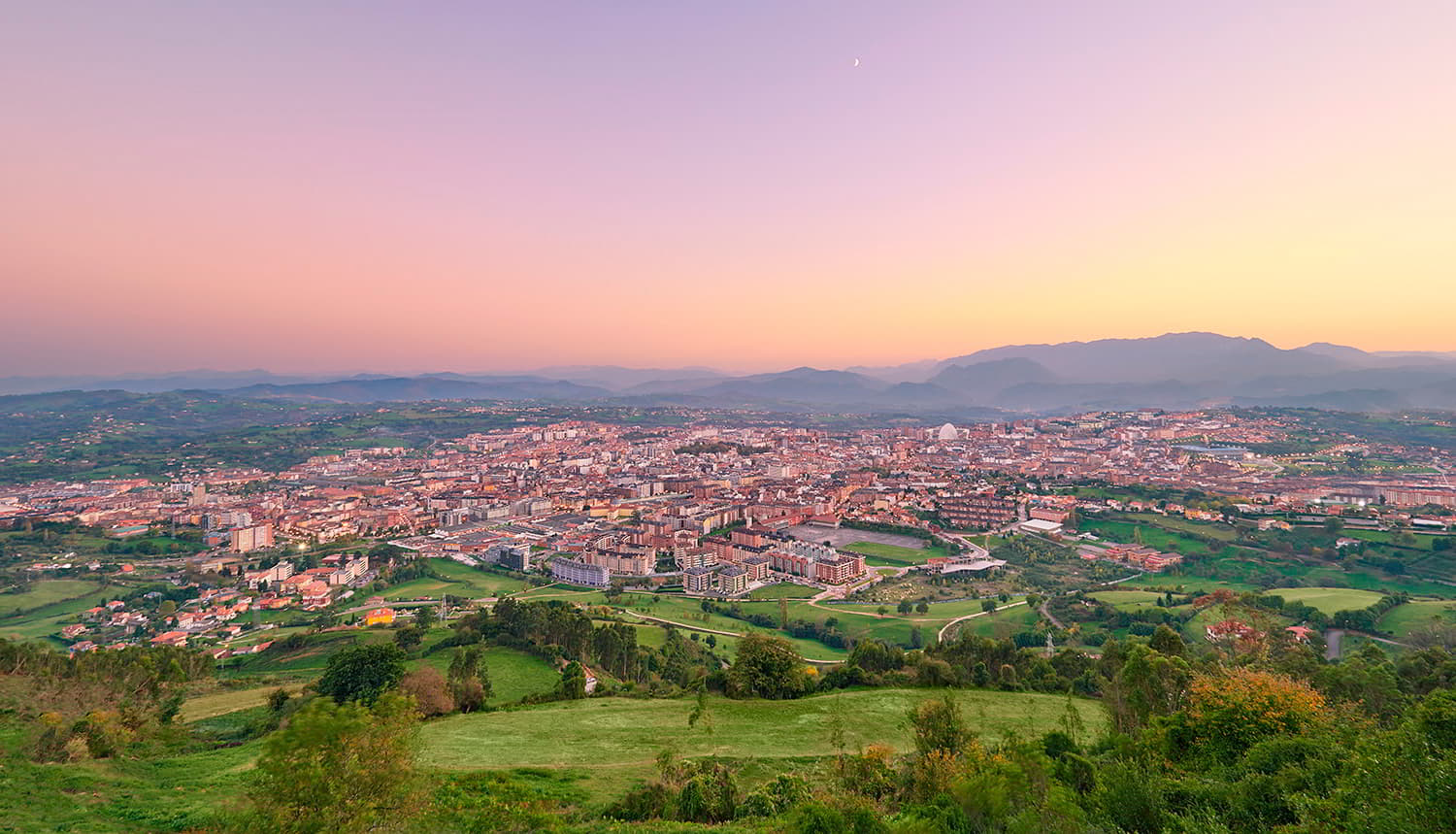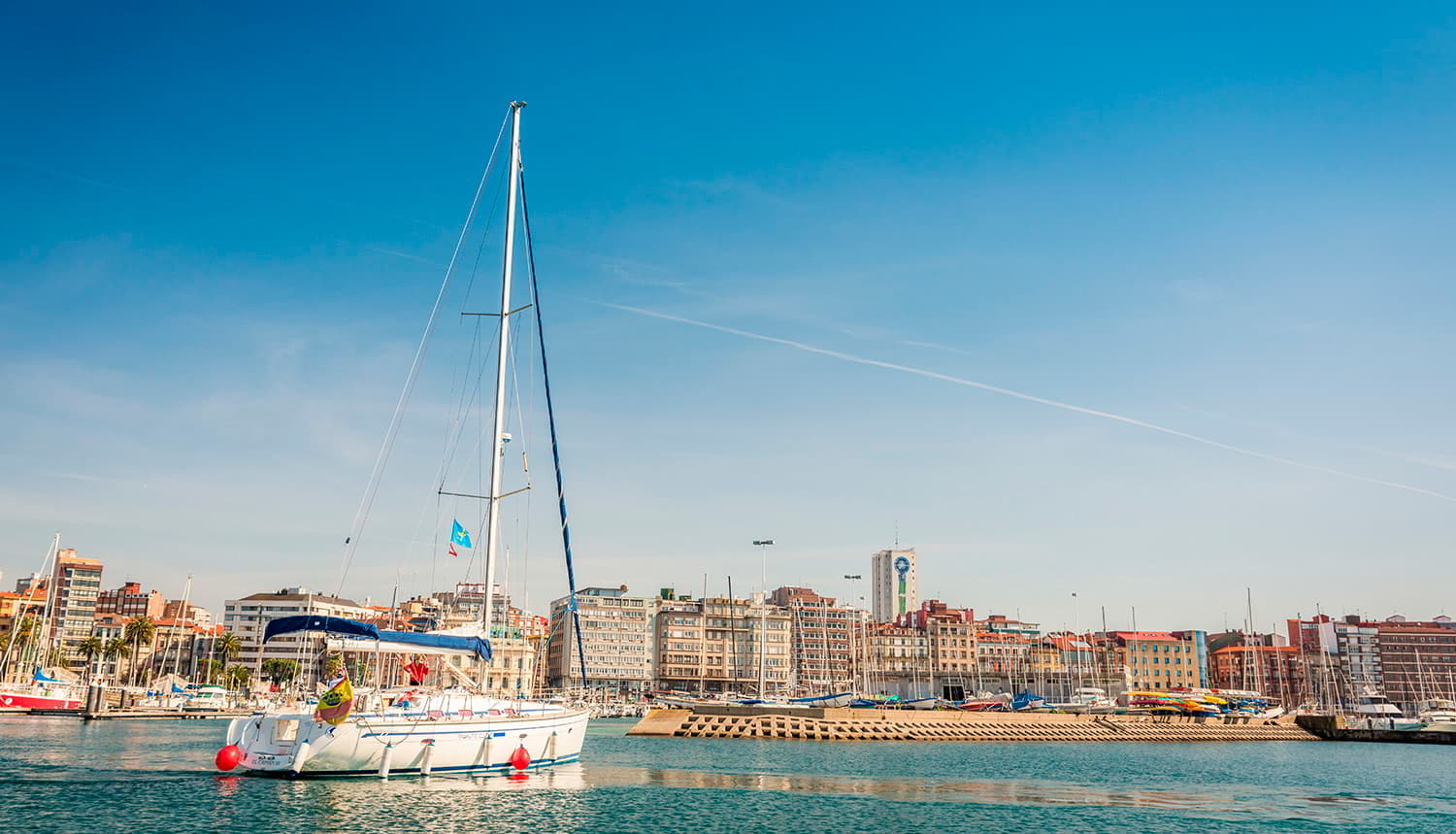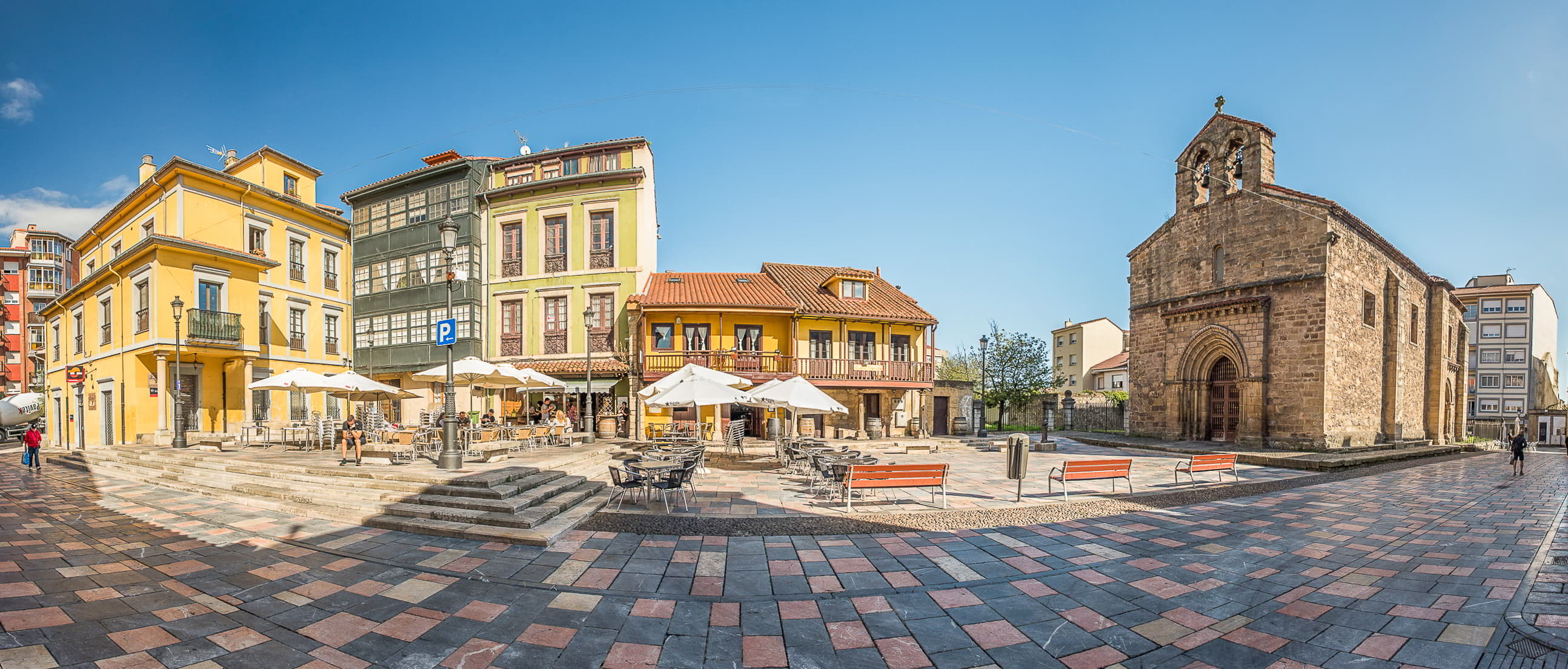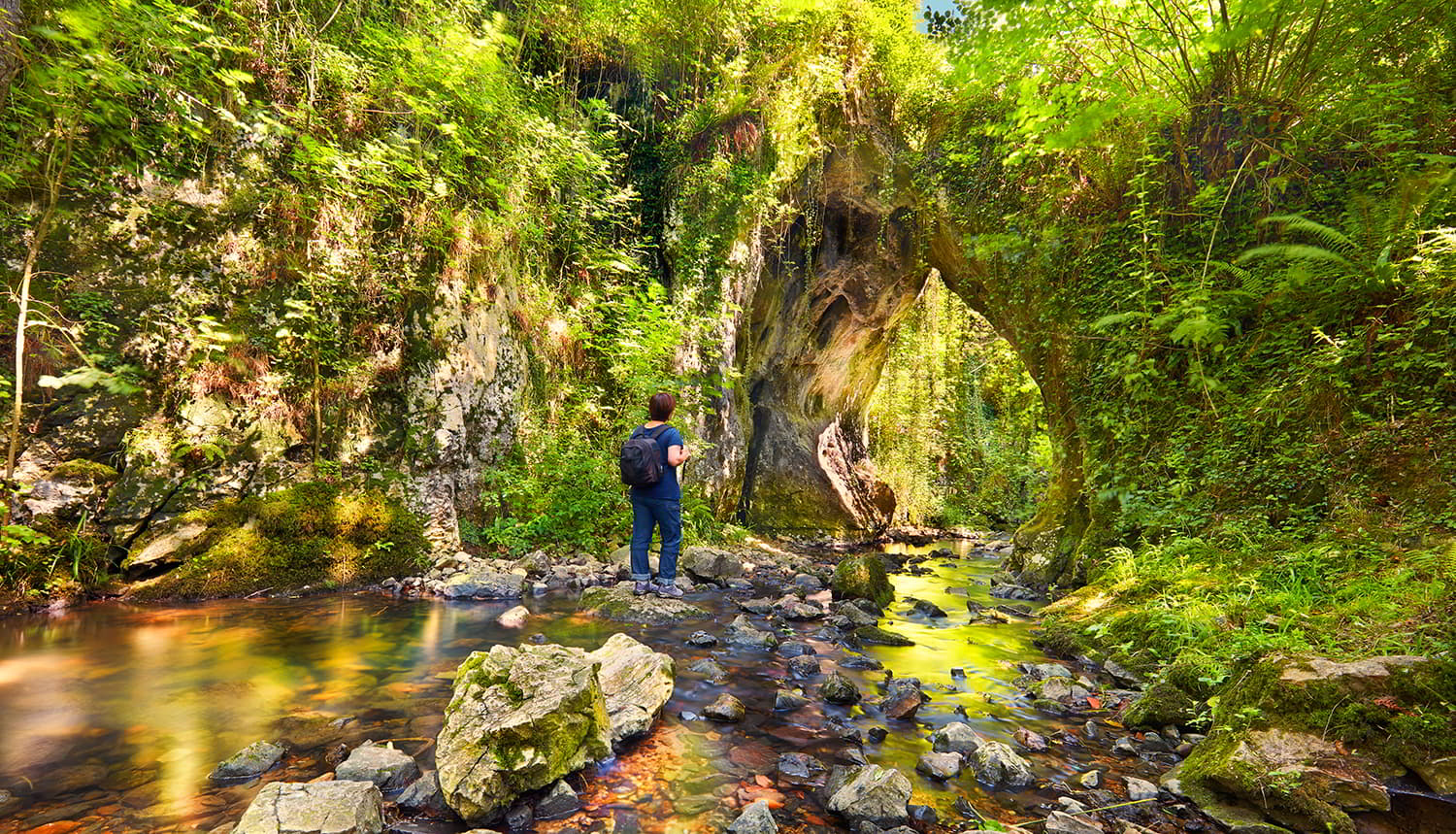Back 10 excursions from the cities of Asturias
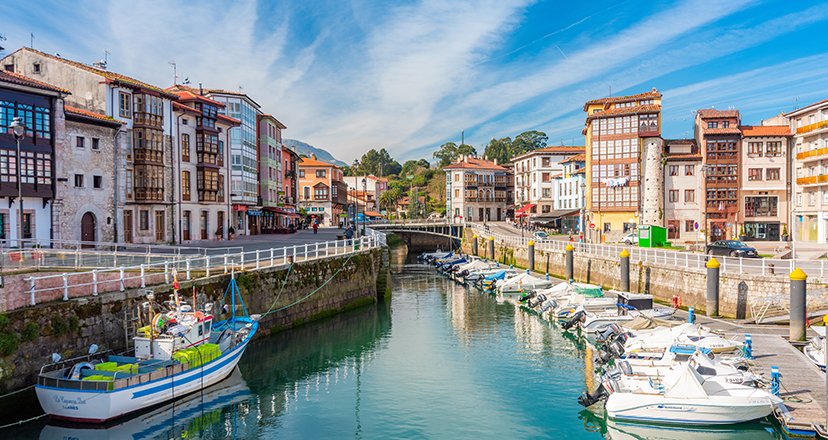
Explore Asturias through these 10 fascinating city breaks
The three cities of Asturias are the perfect "base camp" for your holidays in Asturias. From any of them there are many excursions you can make throughout the region.
The three Asturian cities are the perfect enclave to establish the "base camp" for your holidays. Oviedo/Uviéu, Gijón/Xixón and Avilés are geographically very well located, in the centre of the region, and perfectly communicated between them and with the rest of the Principality.
For this reason, as well as enjoying the excellence and unique personality of each one of them, you can go on countless excursions throughout the length and breadth of Asturias, which will give you an idea of the great variety of places, landscapes and moments that you can experience in the Natural Paradise.
Here are 10 suggestions to get the most out of your Asturian trip
The cities of Asturias, one by one
The three Asturian cities - Oviedo/Uviéu, Gijón/Xixón and Avilés - make up a social, cultural and leisure triangle, which is great if you stay in any of the three, because it is very easy to get to the other two, as the distance between any of them is less than half an hour by car.
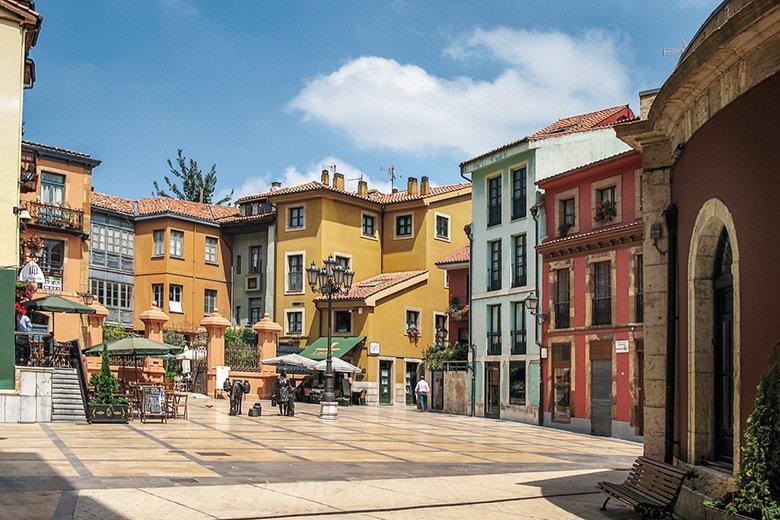
In Oviedo/Uviéu, a visit to the historic centre is a must, where you will find emblematic museums such as the Fine Arts and Archaeological Museums. Oviedo/Uviéu is also the cradle of the Way of St. James, which means you must visit the Cathedral of San Salvador and the Holy Chamber. Not forgetting the pre-Romanesque monuments that are World Heritage Sites: San Julián de los Prados, Santa María del Naranco and San Miguel de Lillo.
Likewise, Oviedo/Uviéu is an ideal city to enjoy gastronomy, with lively boulevards such as Gascona and its surroundings, and it is also a perfect place for shopping, social and cultural life.
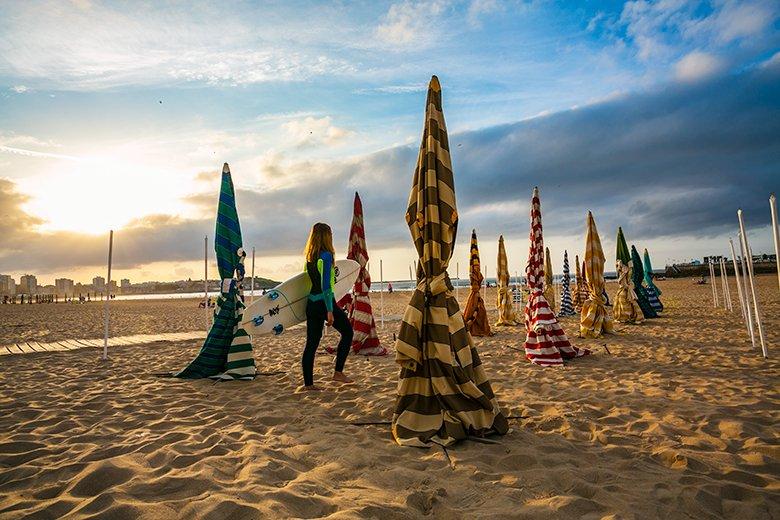
In Gijón/Xixón you will find a city on the coast, where you can enjoy its beaches, coastal paths and promenades to the full, as well as inland. You can't miss the historic Cimavilla neighbourhood, which culminates in the hill of Santa Catalina, and at the foot of which is the marina - formerly a fishing port.
The city centre, with its Paseo de Begoña and the historic streets and squares around it, is a perfect place to take the pulse of the city, with its atmosphere, its cider bars and restaurants, its theatres and monuments, and its shops.
Gijón/Xixón also has an impressive green residential area that extends through La Guía, Somió, La providencia, Deva, etc.
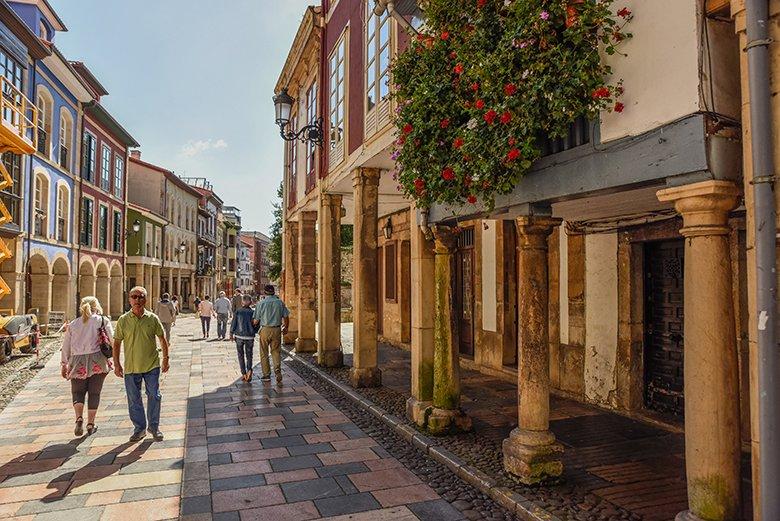
Avilés, for its part, has an impressive historic quarter that preserves palaces from the 14th and 15th centuries, among others, as well as some porticoed streets that are unique in Asturias. The epicentre of this area is the town hall square, and from there you will find streets, squares, fountains, theatres, gardens, churches, etc. And all around, there is a great atmosphere of terraces, bars, cider bars, where you can enjoy excellent seafood cuisine.
Another of the city's leisure and recreational areas are the promenades along the estuary, its marina, and the Niemeyer Centre.
Touring the area of Cabu Peñes
Cabu Peñes is the most northerly point of Asturias, and not only that, but a place where scenic beauty and biodiversity go hand in hand.
There you can take a stroll and enjoy the view, and you can also visit the Peñas Visitor Reception and Marine Environment Interpretation Centre, discovering all the secrets that this sea and this land hold.
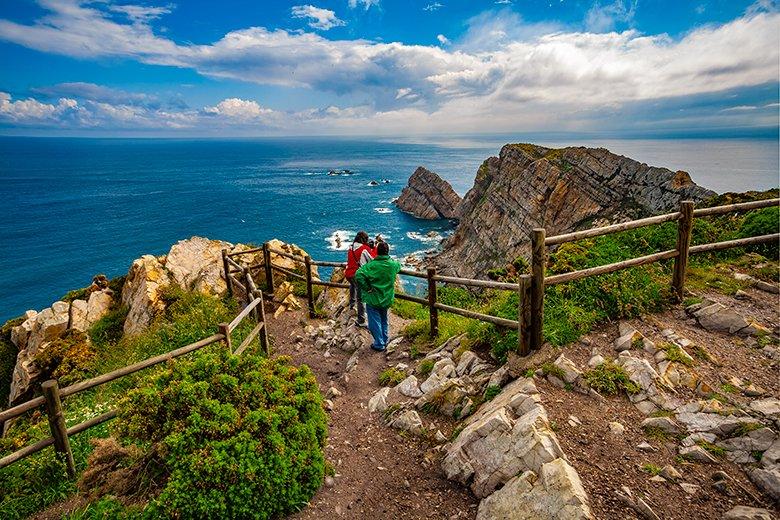
In addition, in the vicinity of Cabu Peñes you have beautiful beaches such as Verdicio, which you can walk to from there, if you fancy a bit of hiking. Because from Cabu Peñes you have different hiking options, both to the east and to the west.
Nearby is also the fishing village of Luanco/Lluanco, with its historic quarter, its Maritime Museum and its atmosphere of cider bars and restaurants. And in the neighbouring council of Carreño, you have another beautiful fishing village, Candás, with museums, beaches and exquisite gastronomy.
For the beauties of Villaviciosa
The council of Villaviciosa offers the visitor very interesting places to visit. Two of them are the ports of Tazones and El Puntal, each one more beautiful and tasty in the broadest sense of the word.
Tazones is like something out of a fairy tale. It is not in vain that it enchanted Emperor Charles V himself, when more than five hundred years ago he landed for the first time on the Spanish coast in this remote Asturian port, which also has a well-deserved reputation for offering visitors the best fish and seafood in the Cantabrian Sea.
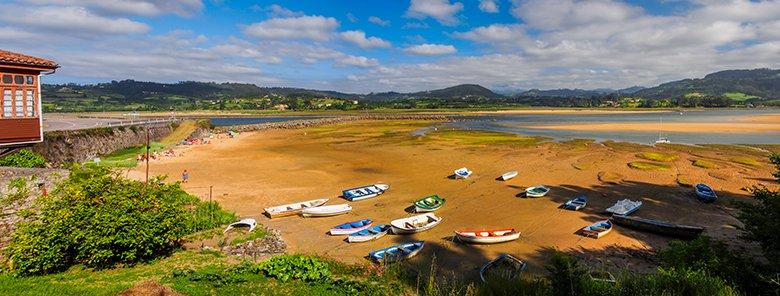
El Puntal is another port of reference. It is in the middle of the Villaviciosa estuary, and is a very pleasant place for water sports and for tasting delicacies from the estuary and the sea. What's more, you'll be able to see the beautiful Rodiles beach in front of you.
And you can round off this tour with a visit to the historic centre of Villaviciosa, the capital of the council, where you will see, among other monumental wonders, the Casona de los Hevia, where Charles V stayed during his stay in Mali.
Cudillero, the pearl of the "pixueta".
Cudillero is one of the most famous fishing villages in the Cantabrian Sea. Evidently this fame is more than deserved not only for its exotic beauty, but also for its deep-rooted cultural traditions, for the excellence of its cuisine and for its great atmosphere.
Known as the "pixueta" village, in allusion to the exclusive language of this place, Cudillero is a very special place, which you cannot see either from the sea or from the land until you are actually there.
Its amphitheatre, with its staggered, brightly coloured fishermen's houses, is a real gem, and is a constant source of photographic inspiration.

A stroll around the town and its viewpoints, especially La Garita, will give you an idea of the magic of this unique place.
In the surrounding area, beaches such as El Silencio or viewpoints such as El Sablón are unforgettable places.
The charm of the Trubia Valleys and the Senda del Oso (Bear's Path)
To the south of Oviedo and in the direction of the high lands of Puerto Ventana, rise the Trubia Valleys, named after the river that flows through them.
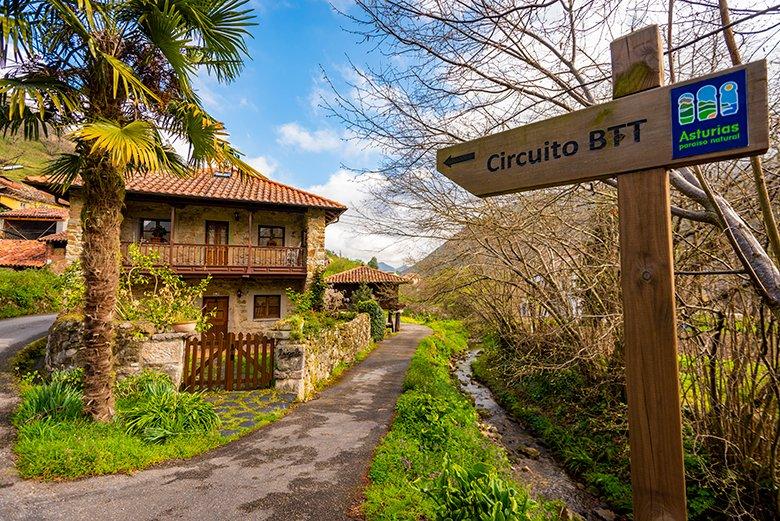
Santo Adriano, Proaza, Teverga and Quirós treasure limestone and mountainous landscapes, ideal for hiking, cycling or climbing. And all with a history closely linked to the origins of the kingdom of Asturias, which can be seen in monuments such as the pre-Romanesque church of Santo Adriano de Tuñón, or the collegiate church of San Pedro de Teverga. There is also a chain of marvellous towns and villages where you can sample the best Asturian cuisine.
And if you like greenways, the Senda del Oso, which takes advantage of the route of an old mining railway that transported coal from Teverga and Quirós to Trubia, is today a paved route that runs through forests, mountains, gorges and tunnels, and is ideal for walking or cycling, and to be enjoyed in a group. There is also a bear enclosure in the surrounding area, where the bears Paca and Molina live, in Santo Adriano, and in neighbouring Proaza, there is the Casa del Oso (Bear House).
Enjoying the Redes Natural Park
The Redes Nature Reserve, formed by the councils of Caso and Sobrescobio, is one of the great green spots that you have "a stone's throw" from the cities of Asturias.
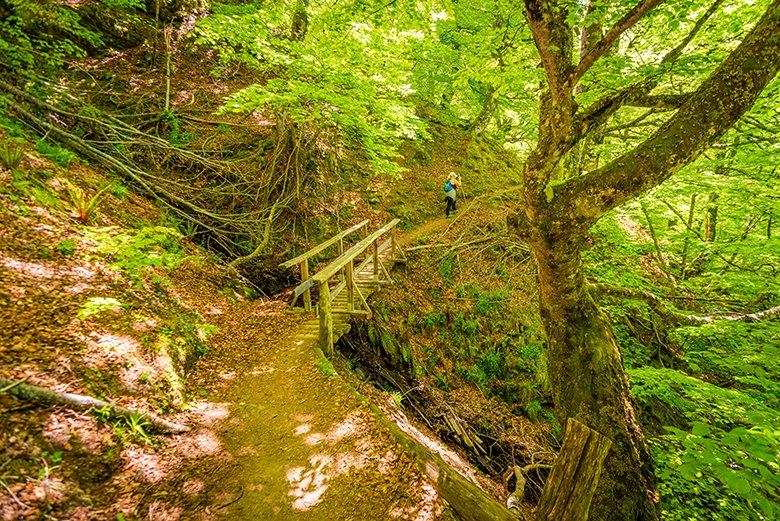
You will follow the course of the river Nalón towards its source at the Tarna pass, and you will find a world of mountains, forests and routes - such as the Tabayón del Mongayu -, or a succession of dream villages such as Tañes, Rusecu, Coballes, Villamoréi, Campiellos, Llaíñes/Ladines, Soto, Prieres, Abantru, Veneros or Caliao, among others.
Not forgetting, of course, Bezanes and the Brañagallones plain.
In conclusion, the Natural Park of Redes, that is to say, the Alto Nalón in its purest state, will give you enough to lose yourself for one or several days.
The tranquillity of Somiedo
The Somiedo Natural Park is a unique wonder in the world. So it has more than deserved its declaration as a Biosphere Reserve.
When you travel there, you must make a stop in the capital of the council, Pola de Somiedo, a very pleasant town, where you will eat very tasty and home-made food, and you can visit the Reception and Interpretation Centre of the Park, to make a first immersion in the natural environment of Somiedo.
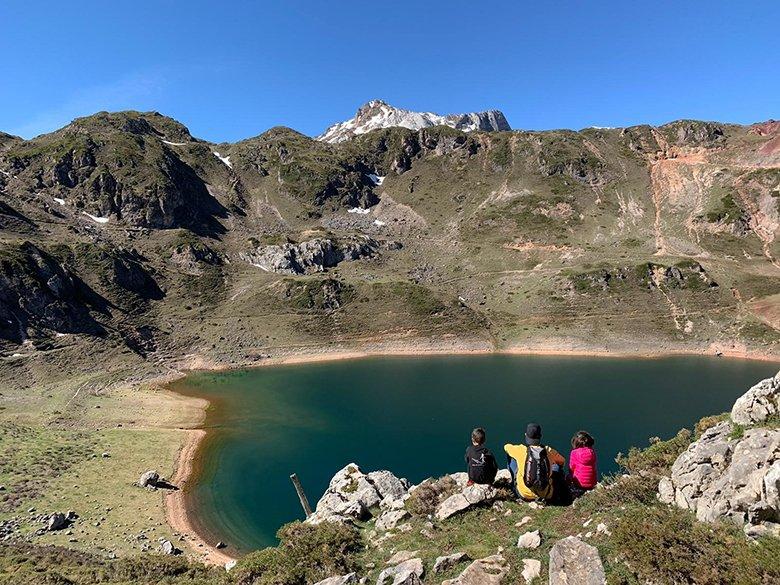
Somiedo is a land of brañas, such as Pornacal, Sousas or Mumián. It is therefore an ideal place to enjoy hiking to the full.
Among its many beauties, you cannot miss the village of Valle de Lago, nor the walk to Lago del Valle, the largest lake in Asturias.
The Saliencia Valley, with its three lakes, is another of those unforgettable excursions.
Just as unforgettable are its villages, some of which are surprisingly beautiful, such as Villar de Vildas, Perlunes or La Peral.
Through the fascinating lands of eastern Asturias
The eastern coast of Asturias has a well-deserved reputation for being seductive. Its unique karstic configuration of large limestone masses carved out by millions of years of encounters with the rough Cantabrian Sea, make it a unique landscape.
It is the coast of dinosaurs because from the council of Villaviciosa to the council of Ribadesella, passing through Colunga, on some beaches and cliffs you will find solidified ichnites from many millions of years ago. Furthermore, in Colunga, you can visit the Jurassic Museum of Asturias (MUJA).
But it is also the coast of the bufones, those salt water springs that are formed when the sea water seeps through the rocky cavities during rough tides.
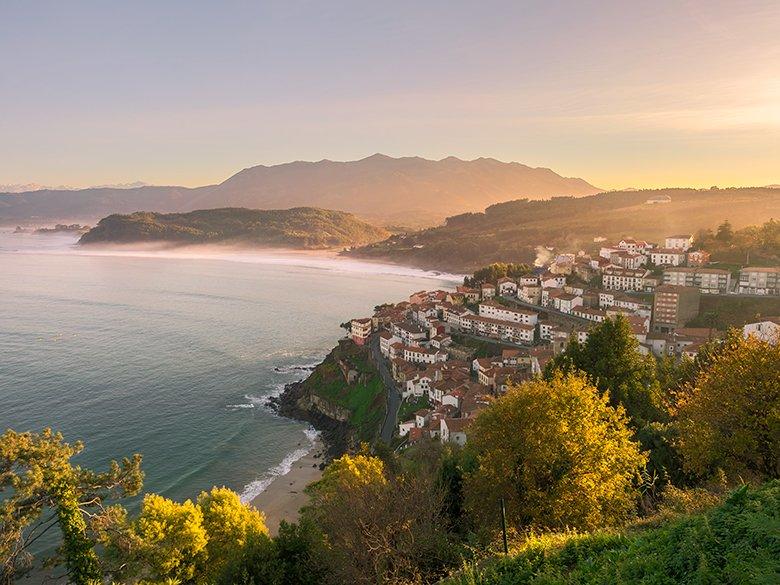
And it is also the coast of beautiful fishing villages such as Llastres, Ribadesella/Ribeseya, and Llanes.
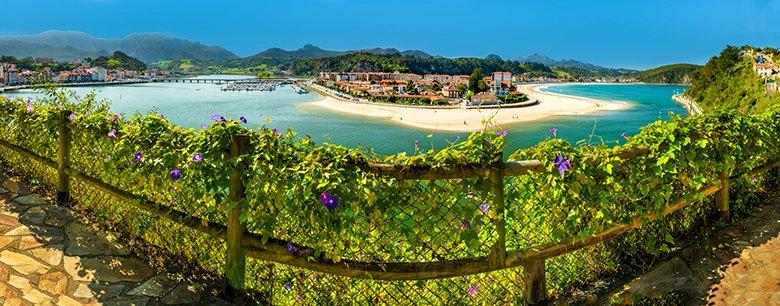
All three are unmissable stops because they have very interesting historic centres, as well as walks by the sea, beaches and a great gastronomic and cultural atmosphere.
Meanwhile, inland in this eastern region, Cuadonga/Covadongaand the lakes are another of those irresistible places to visit. You will have to visit one of the most culturally rich councils in the area: Cangas de Onís.
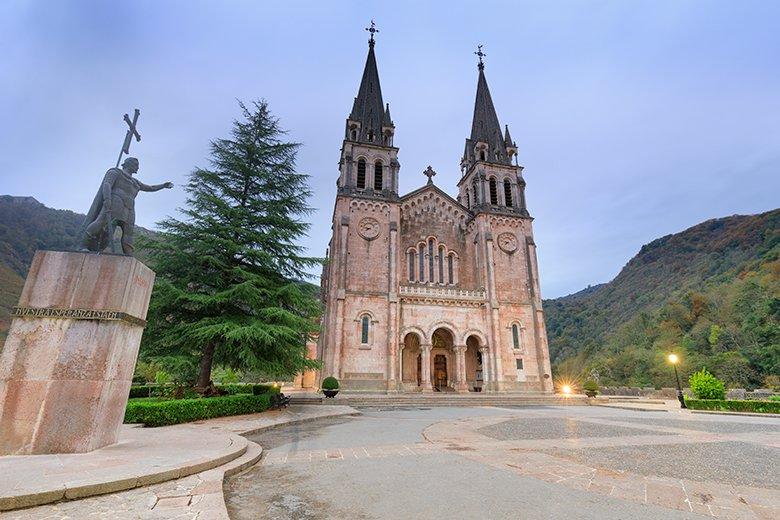
Cuadonga/Covadonga is a historical, spiritual and natural landmark set in a place of unusual beauty, and is also the gateway to the Picos de Europa National Park through its western massif, where the famous Cuadonga/Covadonga lakes are also located.
Before or after these visits you should make a stop in the capital of Cantabria, which is always full of atmosphere, and if it is Sunday, go to its market, where you can buy the best artisan cheeses from the Picos de Europa, with Gamonéu and Cabrales at the top of the list.
An excursion through two villages on the Primitive Way: Grado and Salas
The interior of Asturias has some incredible surprises in store for you. In addition to its many places and corners, it has the charm of very old villages, some of which are linked to the oldest existing Pilgrim's Way to Santiago: the Primitive Way.
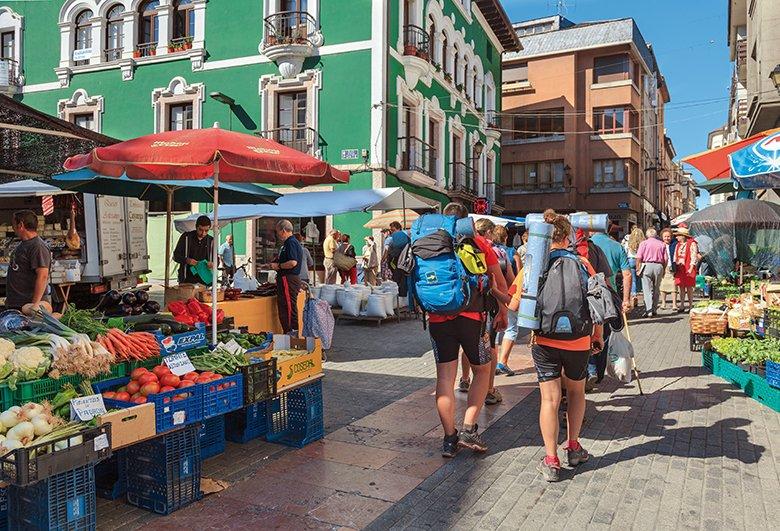
Grau/Grado, also known as the town of Moscona, has one of the oldest Sunday markets in the whole of Asturias, dating back to the Middle Ages, the same period in which the Camino de Santiago was born, a cultural itinerary of the first magnitude that passes through Grau/Grado. And if you have a sweet tooth, you have to try its tocinillos.
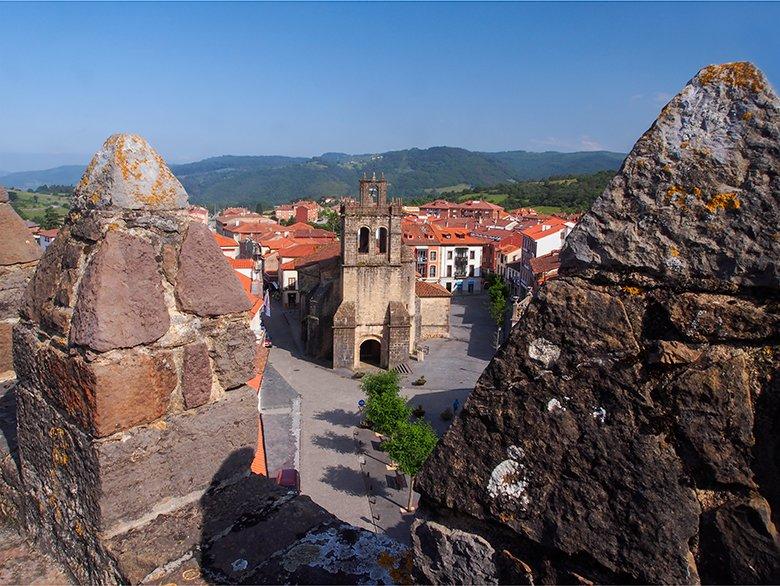
Salas is also a medieval and Jacobean town, with an interesting historic quarter presided over by the Castle of Valdés-Salas, and with one of the most impressive collegiate churches in Asturias, that of Santa María la Mayor. Throughout the year you will see a trickle of pilgrims through the centre of the town, giving it a different atmosphere. And of course, don't leave Salas without tasting its "carajitos del profesor".
Along the stunning western coast of Asturias
The western coast of Asturias is dotted with beaches, cliffs and capes that make up an incomparable symphony of landscapes, in which beautiful fishing villages add a touch of colour.
Two places not to be missed are Cape Vidio, in Cudillero, next to the village of Oviñana, and Cape Busto, in Valdés, a few kilometres from Luarca/Ḷḷuarca.
One of these beautiful villages is Luarca/Ḷḷuarca, known as the white village of the green coast.
Its old fishermen's quarters, the mesa de mareantes, the Beso bridge, its palaces and Indian houses, its cemetery, its lighthouse and hermitage of La Blanca, its viewpoint and hermitage of El Chano, its statue of the Nobel Prize winner Severo Ochoa... All this and much more you will have to see and enjoy in Luarca/Ḷḷuarca.
It also has one of the most important botanical gardens in Europe - the Jardines de la Fonte Baixa - which is a marvellous place to visit for a tour of the flora of the whole world, and all with stunning views of the Bay of Biscay, the town and its beaches.
As if this were not enough, very close to Luarca/Ḷḷuarca, in the village of La Mata, is the Parque de la Vida, a unique space to learn about the life of the oceans, the cosmos and the different terrestrial ecosystems.
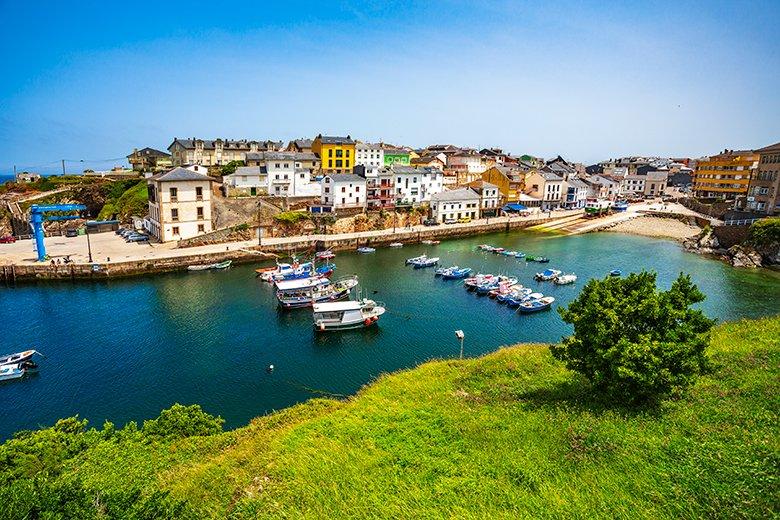
Continuing along the route you will come across places with a lot of flavour - in the broadest sense of the word - and a rich history, such as Puerto de Vega, in Navia, or El Porto/Viavélez, in El Franco. And you can round off your trip in the town of Tapia, with beautiful beaches with a surfing tradition, such as Anguileiro, and a beautiful port with bars and restaurants where you can sample excellent seafood cuisine. Or if you prefer, you can go to Penarronda beach.
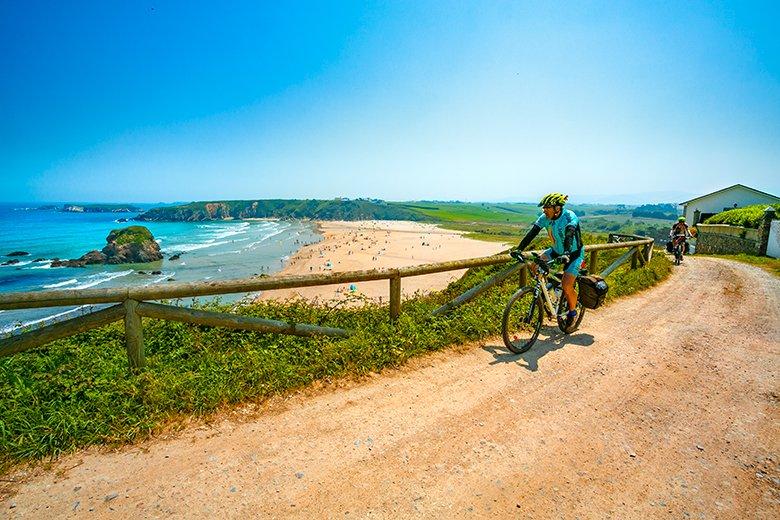
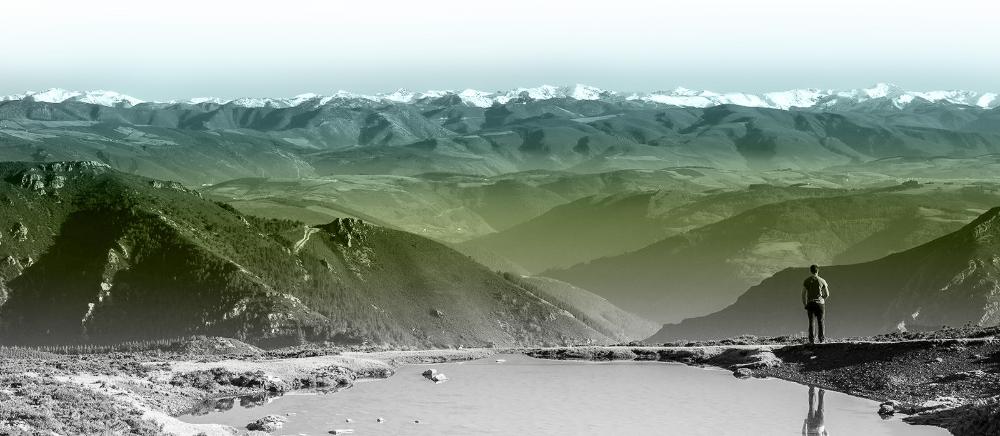
Subscribe to our newsletter and take advantage of offers, discounts, and news
Subscribe

